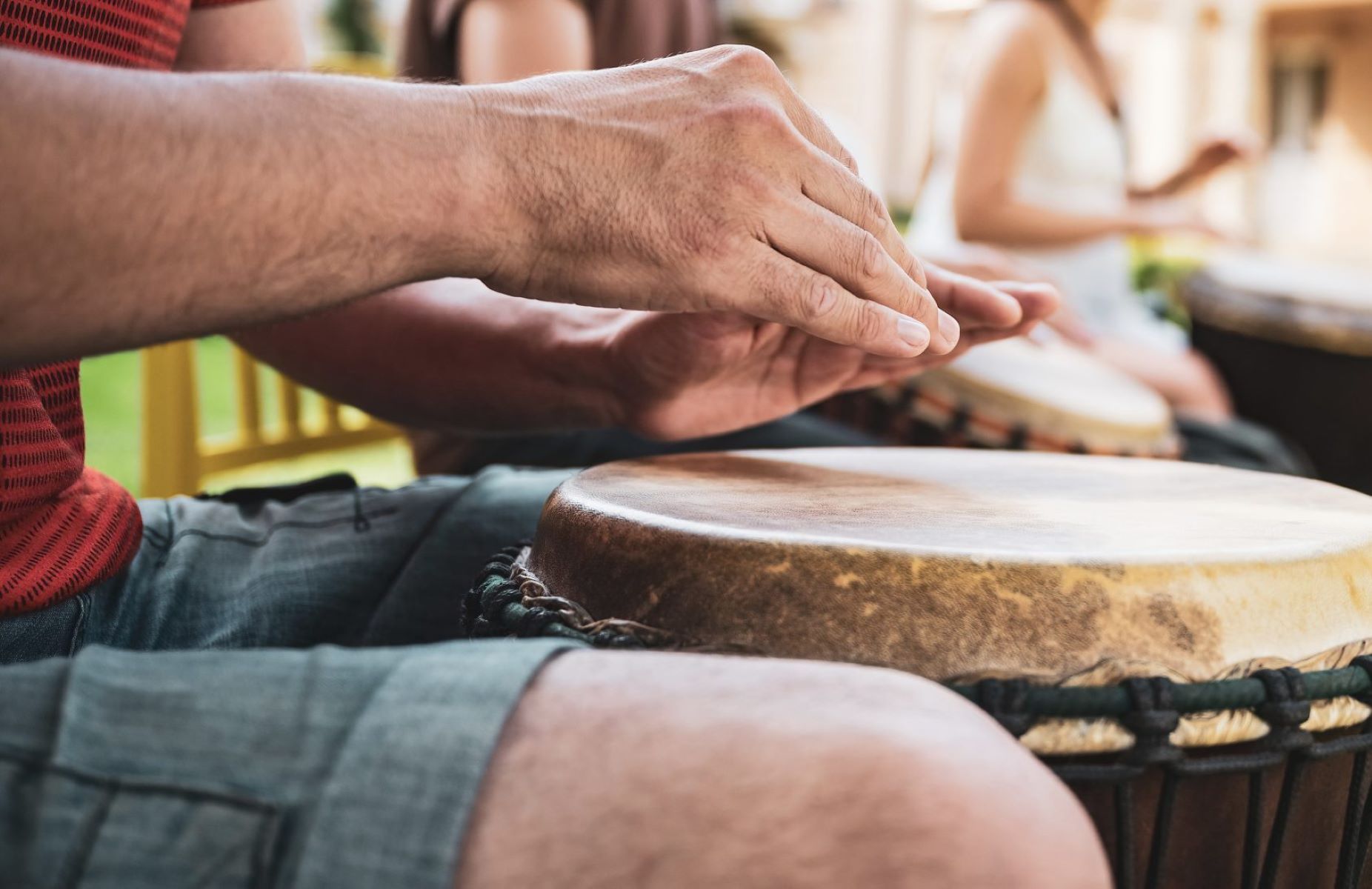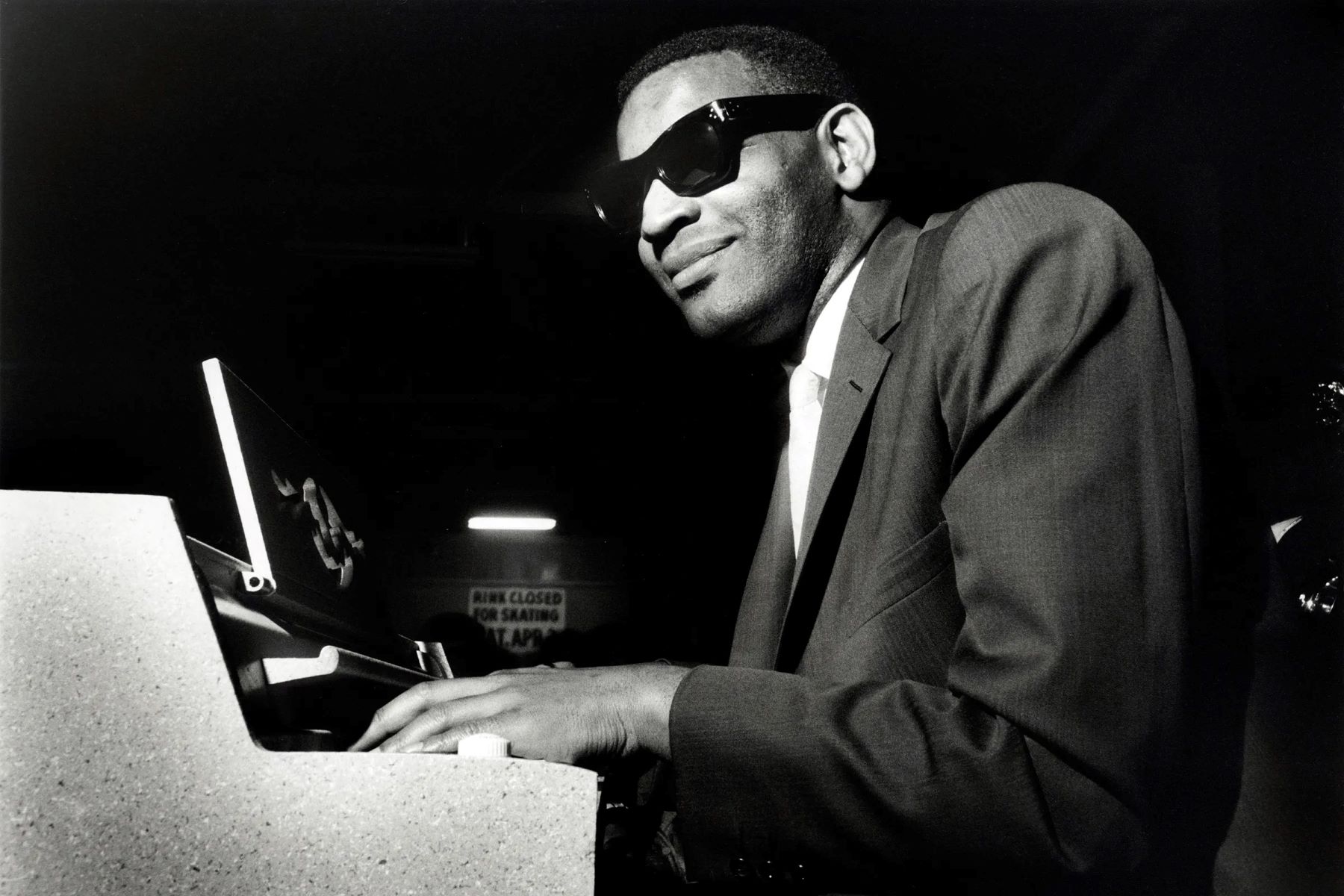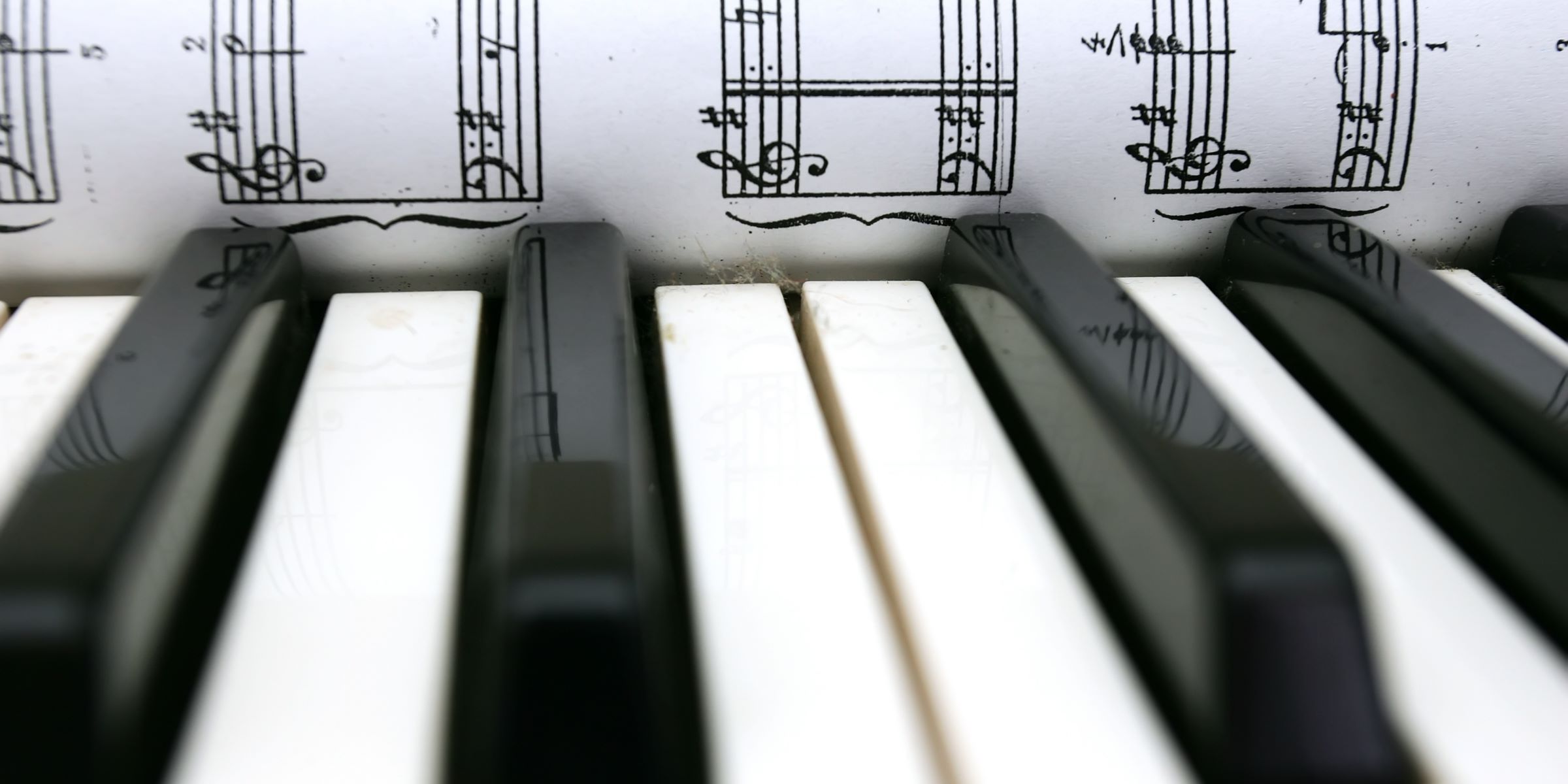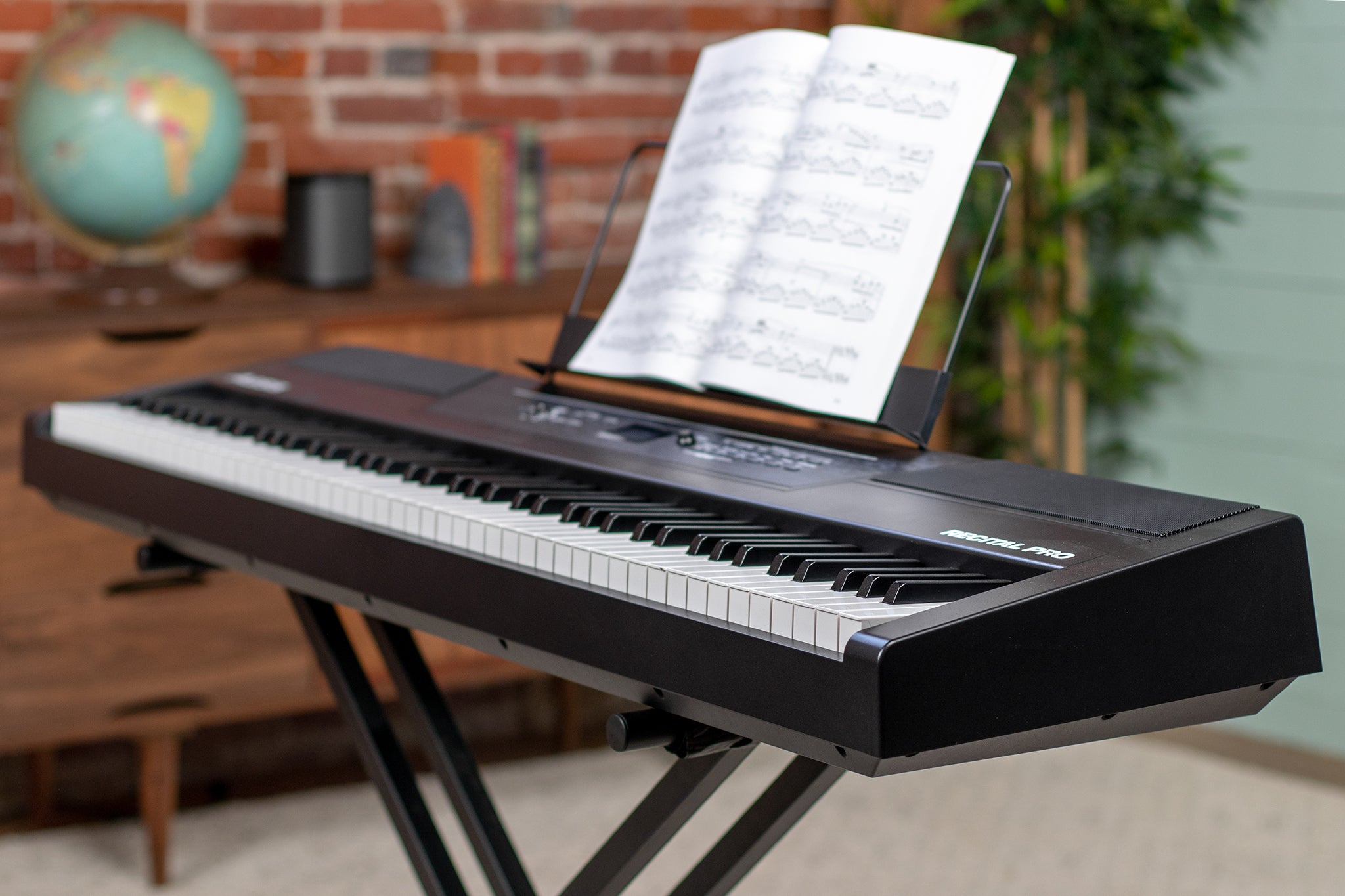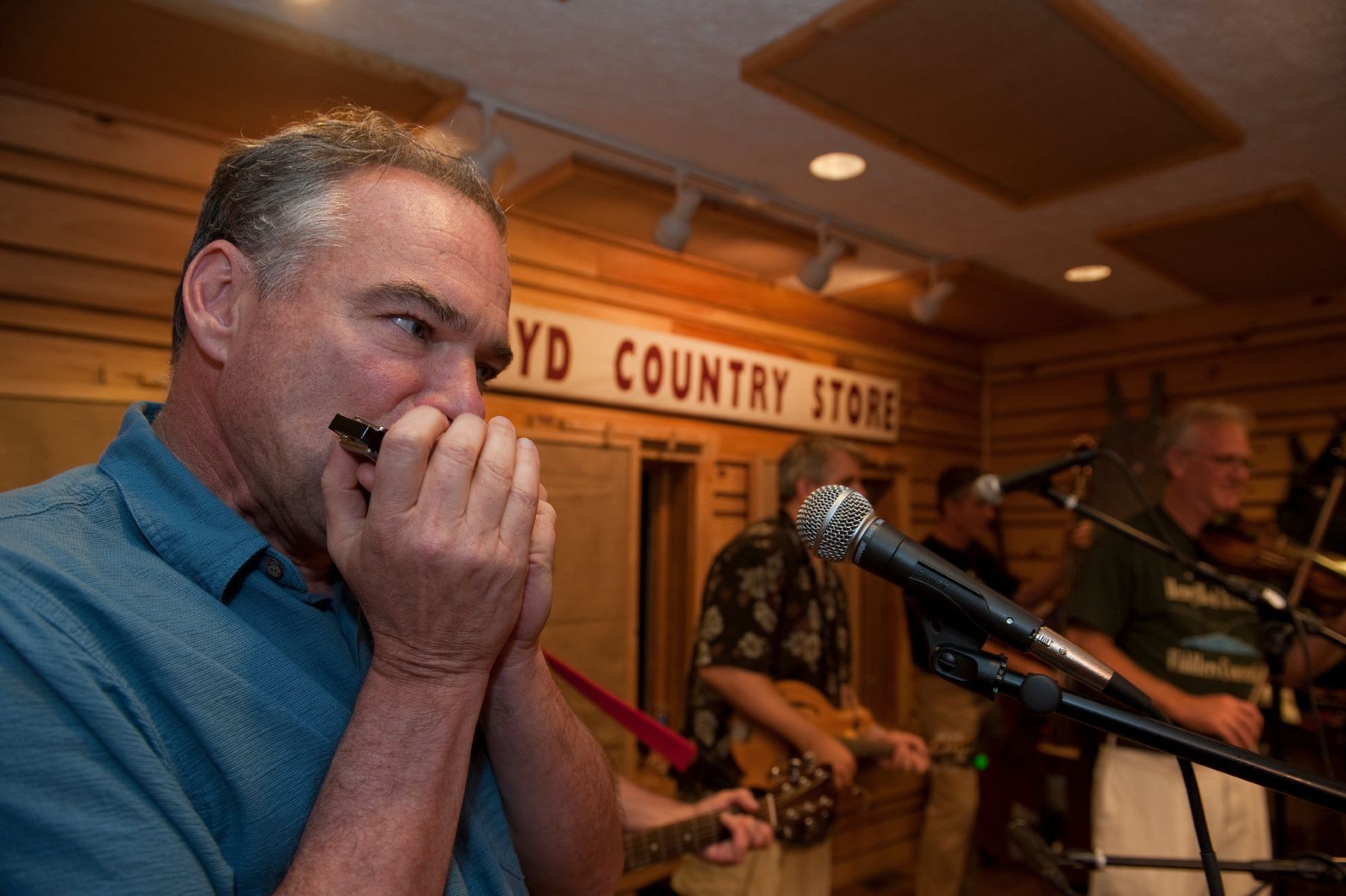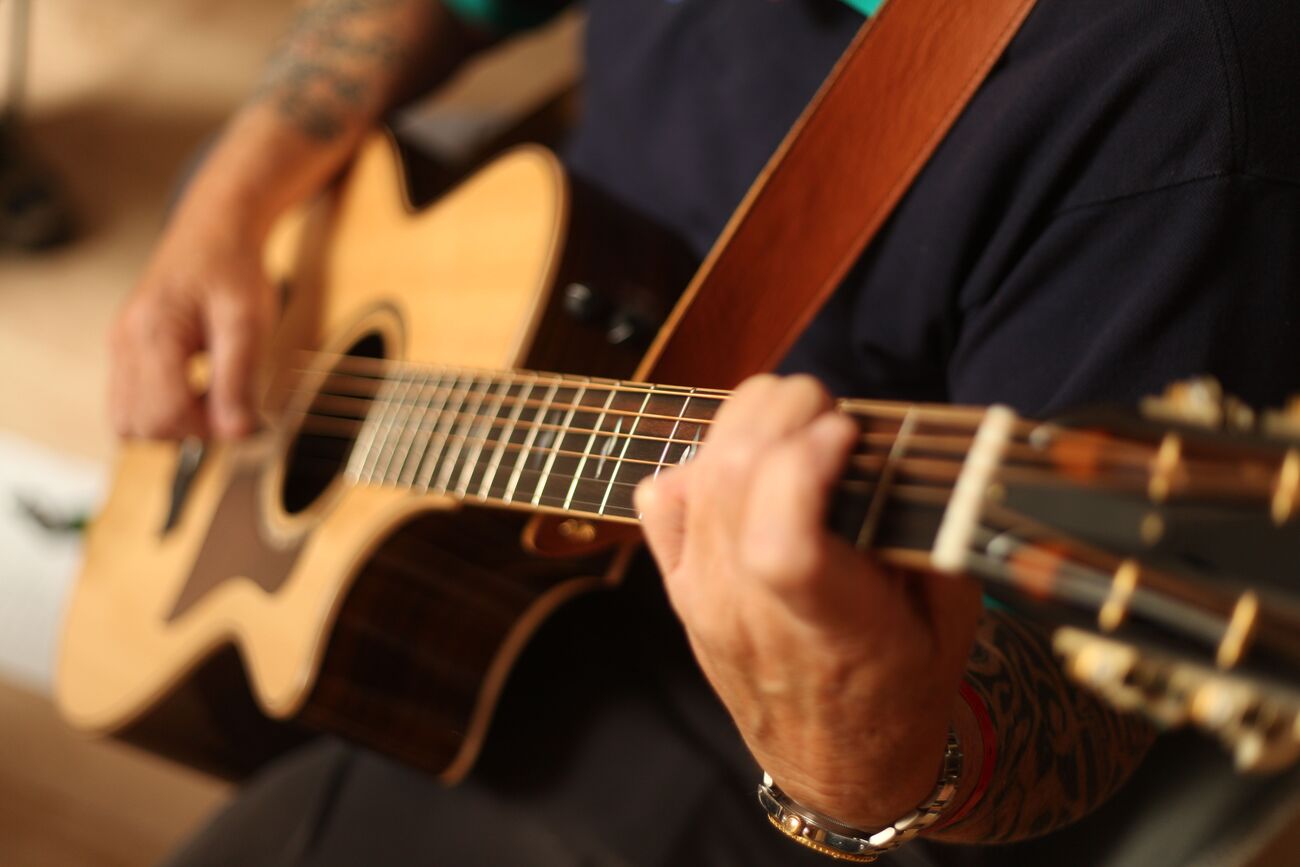Home>Instruments>Piano>Learning How To Play Piano For Beginners


Piano
Learning How To Play Piano For Beginners
Modified: February 11, 2024
Learn how to play piano for beginners with our comprehensive guide. Master the basics and start playing your favorite tunes today. Perfect for anyone wanting to learn piano.
(Many of the links in this article redirect to a specific reviewed product. Your purchase of these products through affiliate links helps to generate commission for AudioLover.com, at no extra cost. Learn more)
Table of Contents
Introduction
Introduction
Learning to play the piano can be a rewarding and enriching experience. Whether you have a passion for music or simply want to acquire a new skill, the journey of mastering this timeless instrument is filled with excitement and the potential for personal growth. As a beginner, diving into the world of piano playing may seem daunting at first, but with the right guidance and dedication, it can become a fulfilling and enjoyable pursuit.
In this comprehensive guide, we will explore the fundamental steps to help beginners embark on their piano-playing journey. From selecting the right instrument to understanding basic music theory and mastering essential techniques, this article will provide valuable insights and practical tips to set you on the path to becoming a proficient pianist.
The piano, with its rich history and versatility, offers a wide range of musical possibilities. Whether you aspire to play classical compositions, jazz standards, or contemporary pop songs, the skills you develop as a beginner will serve as the foundation for your musical endeavors. Through consistent practice and a willingness to learn, you can unlock the boundless potential for creativity and self-expression that the piano has to offer.
As we delve into the various aspects of learning to play the piano, it's important to approach this journey with patience and an open mind. Embracing the learning process and celebrating small victories along the way will not only make the experience more enjoyable but also contribute to your overall progress. With dedication and a positive attitude, you can embark on a fulfilling musical journey that will bring joy and fulfillment for years to come.
Whether you're a complete novice or have dabbled in piano playing before, this guide will equip you with the essential knowledge and skills needed to begin your musical odyssey. So, let's embark on this enriching adventure and lay the groundwork for a rewarding piano-playing experience.
Choosing the Right Piano
Choosing the Right Piano
When venturing into the world of piano playing, one of the first and most crucial decisions you’ll face is choosing the right instrument. Whether you opt for an acoustic piano or a digital keyboard, selecting the one that aligns with your needs, preferences, and budget is essential to your learning journey.
Acoustic pianos, renowned for their timeless sound and tactile keys, come in two primary forms: grand pianos and upright pianos. Grand pianos, with their majestic presence and unparalleled resonance, are favored by many pianists for their expressive capabilities and dynamic range. On the other hand, upright pianos, with their space-saving design and rich tonal quality, offer a more practical option for those with limited space or budget constraints.
Alternatively, digital keyboards and pianos provide a versatile and convenient alternative, especially for beginners. These instruments often feature weighted keys that mimic the feel of an acoustic piano, along with a variety of sounds, built-in metronomes, and recording capabilities. Additionally, their portability and headphone connectivity make them ideal for practice sessions in any environment.
When making your choice, consider factors such as available space, acoustic considerations, budget, and your musical goals. Visiting piano showrooms to test different instruments and seeking guidance from experienced musicians can offer valuable insights to aid in your decision-making process.
Ultimately, the right piano for you is one that resonates with your musical aspirations, inspires you to practice diligently, and complements your learning style. By carefully evaluating your options and considering your individual preferences, you can set the stage for an enriching and enjoyable piano-playing experience.
Understanding the Basics of Music Theory
Understanding the Basics of Music Theory
Before delving into the practical aspects of playing the piano, it’s essential to grasp the fundamentals of music theory. Understanding concepts such as notes, scales, chords, and rhythm will provide a strong foundation for your musical journey and enhance your overall comprehension of piano playing.
Notes are the building blocks of music, representing specific pitches and durations. The musical alphabet consists of the notes A, B, C, D, E, F, and G, which repeat in a continuous cycle across different octaves. Learning to identify and locate these notes on the piano keyboard is a fundamental skill that will aid in reading sheet music and playing melodies.
Scales, comprised of a sequence of notes in ascending or descending order, form the basis of melodies and harmonies. Familiarizing yourself with major and minor scales, as well as their respective key signatures, will enable you to navigate through various musical pieces and develop a deeper understanding of tonality.
Chords, which are formed by combining multiple notes played simultaneously, are integral to creating harmony and accompanying melodies. Understanding basic chord structures and progressions will empower you to play accompaniments and enrich your musical repertoire.
Rhythm, another fundamental aspect of music theory, governs the duration and timing of notes and rests. Mastering rhythmic patterns and time signatures is essential for maintaining a steady tempo and expressing musical phrases with precision.
By immersing yourself in the principles of music theory, you will gain a comprehensive understanding of how music is constructed and organized. This knowledge will not only enhance your ability to interpret and perform musical compositions but also facilitate effective communication with other musicians.
As you embark on your piano-playing journey, dedicating time to study and internalize the basics of music theory will lay a solid groundwork for your development as a musician. Embrace the learning process with curiosity and enthusiasm, and let your growing understanding of music theory enrich your musical pursuits.
Getting Familiar with the Piano Keyboard
Getting Familiar with the Piano Keyboard
As a beginner pianist, developing a strong familiarity with the layout and structure of the piano keyboard is a fundamental step in your learning journey. The keyboard, comprising black and white keys arranged in a repeating pattern, serves as the canvas for creating beautiful melodies, harmonies, and rhythms.
The standard piano keyboard consists of 88 keys, spanning across seven octaves. The arrangement comprises groups of two and three black keys, which facilitate the identification of different notes and intervals. Understanding the visual and tactile layout of the keys is essential for navigating musical passages and executing precise finger movements.
One of the initial concepts to grasp is the distinction between white and black keys. The white keys represent the natural notes (A, B, C, D, E, F, G), while the black keys, known as sharps or flats, modify the pitch of the adjacent natural notes. Familiarizing yourself with the pattern of black keys and their relationship to the white keys will aid in understanding scales, chords, and musical intervals.
Developing spatial awareness and muscle memory is crucial for efficient piano playing. As you acquaint yourself with the keyboard, pay attention to the positioning of your hands and fingers. Proper posture and hand placement will not only enhance your playing technique but also minimize the risk of strain or injury.
Exploring the range of the keyboard and practicing simple exercises to navigate different octaves will gradually strengthen your dexterity and coordination. As you become more comfortable with the layout of the keys, you’ll gain the confidence to explore a diverse range of musical pieces and genres.
Moreover, understanding the concept of middle C, a central reference point on the keyboard, serves as a valuable anchor for locating and identifying notes across the piano’s range. This foundational knowledge forms the basis for reading sheet music and understanding the spatial relationships between different pitches.
By immersing yourself in the intricacies of the piano keyboard, you’ll pave the way for a more intuitive and expressive musical journey. Embrace the process of familiarizing yourself with the keys, and let your growing comfort and confidence propel you toward mastering the art of piano playing.
Proper Hand and Finger Placement
Proper Hand and Finger Placement
Establishing proper hand and finger placement is crucial for developing a strong foundation in piano playing. The ergonomic positioning of your hands and fingers not only enhances your playing technique but also minimizes the risk of strain and fatigue, allowing for sustained practice and performance.
When seated at the piano, maintaining a relaxed and natural hand posture is essential. Position your hands with a gentle curve, avoiding tension or stiffness in the fingers. The wrists should remain level with the piano keys, promoting fluid movement and agility across the keyboard.
Understanding the concept of hand positioning, particularly the distinction between the right and left hands, sets the stage for effective coordination and independence. The right hand typically assumes a higher register on the keyboard, while the left hand navigates the lower register. This division of roles allows for the simultaneous execution of melodies, harmonies, and accompaniments.
Finger numbering, a fundamental aspect of piano technique, assigns a number to each finger to facilitate precise and efficient playing. The standard finger numbering begins with the thumb as “1” and progresses sequentially to the fifth finger, also known as the pinky, designated as “5.” Familiarizing yourself with finger numbering enables you to follow specific fingerings in musical scores and execute passages with accuracy.
Moreover, understanding the concept of hand and finger independence is essential for mastering intricate passages and polyphonic compositions. Practicing exercises that target finger dexterity and control will enhance your ability to play with clarity and expressiveness.
As you embark on your piano-playing journey, dedicating time to develop proper hand and finger placement will yield long-term benefits in your musical progress. Embrace the process of refining your technique, and let the cultivation of ergonomic and efficient playing habits lay the groundwork for your growth as a pianist.
Learning Basic Piano Techniques
Learning Basic Piano Techniques
Mastering basic piano techniques is essential for building a strong musical foundation and nurturing a versatile playing style. These fundamental techniques encompass a range of skills that contribute to expressive and nuanced piano playing, allowing beginners to develop a solid grasp of the instrument’s capabilities.
One of the primary techniques to focus on is proper posture and hand positioning, as mentioned earlier. Maintaining a relaxed yet poised posture at the piano, along with cultivating a natural hand shape and finger curvature, forms the cornerstone of effective piano technique. This foundation sets the stage for fluid and controlled movement across the keyboard.
Finger independence, the ability of each finger to move independently of the others, is a crucial skill to cultivate. Practicing exercises that target finger independence, such as scales, arpeggios, and finger-strengthening drills, enhances dexterity and control, enabling the execution of intricate passages with precision.
Articulation, which pertains to the clarity and manner in which notes are played, is another vital aspect of piano technique. Understanding and practicing different articulations, including staccato (short and detached), legato (smooth and connected), and accents, allows for expressive and dynamic interpretation of musical phrases.
Furthermore, mastering the art of pedaling, a technique that involves the effective use of the sustain pedal to enhance the resonance and blending of notes, adds depth and richness to your playing. Learning to apply pedal techniques judiciously contributes to the shaping of musical phrases and the creation of captivating tonal textures.
Developing a keen sense of dynamic control, encompassing variations in volume and intensity, is integral to conveying emotion and musical expression. Experimenting with different dynamic levels, from pianissimo (very soft) to fortissimo (very loud), empowers you to imbue your playing with sensitivity and depth.
As you immerse yourself in the exploration of basic piano techniques, remember that patience and consistent practice are key to mastering these skills. Embrace the process of honing your technique, and let your growing proficiency open the door to a world of musical possibilities on the piano.
Practicing Scales and Chords
Practicing Scales and Chords
Devoting time to practicing scales and chords forms the bedrock of technical proficiency and musical fluency for aspiring pianists. These fundamental exercises not only enhance finger dexterity and coordination but also deepen your understanding of music theory and harmony, laying the groundwork for confident and expressive piano playing.
Scales, comprising a sequence of notes in a specific pattern, are essential for developing finger agility and familiarity with different keys. Major and minor scales, in particular, serve as the building blocks of melodies and harmonies, and mastering them across various octaves cultivates a strong sense of tonality and pitch relationships.
When practicing scales, focus on achieving evenness and consistency in tone and articulation across all fingers. Gradually increasing the tempo as you gain proficiency will enhance your speed and precision, contributing to fluid and effortless playing.
Chords, formed by playing multiple notes simultaneously, are integral to creating harmonic accompaniments and enriching musical textures. Devote time to practicing common chord progressions and inversions, which involve reordering the notes within a chord, to expand your harmonic vocabulary and strengthen your grasp of chordal structures.
Furthermore, exploring arpeggios, which are broken chords played in a flowing and continuous manner, enhances your ability to navigate chordal passages with fluidity and grace. Practicing arpeggios in different rhythmic patterns and dynamic variations contributes to the development of expressive and resonant playing.
Understanding the relationship between scales and chords is essential for comprehensive musical development. As you practice these foundational exercises, strive to integrate them into your repertoire, improvisations, and compositions, allowing for a seamless and intuitive application of these techniques in diverse musical contexts.
Consistent and focused practice of scales and chords not only refines your technical prowess but also fosters a deeper connection to the music you play. Embrace these exercises as opportunities for growth and musical exploration, and let the discipline and dedication you invest in practicing scales and chords propel you toward a more confident and versatile piano-playing journey.
Reading Sheet Music
Reading Sheet Music
Proficiency in reading sheet music is a vital skill for any aspiring pianist. Sheet music serves as a roadmap, guiding musicians through the intricacies of a musical composition and conveying essential information about pitch, rhythm, dynamics, and expression. As a beginner, developing the ability to interpret and translate the symbols and notations on sheet music into expressive piano performances is a significant milestone in your musical journey.
The staff, a set of five horizontal lines, is the foundation of sheet music notation. Notes are placed on and between these lines to represent specific pitches, with the vertical position indicating the pitch of the note. Understanding the placement of notes on the staff and their corresponding keys on the piano keyboard is essential for accurate interpretation and execution.
In addition to notes, sheet music incorporates various symbols and markings that provide guidance on tempo, dynamics, articulation, and phrasing. Familiarizing yourself with these symbols, such as dynamic markings (e.g., pianissimo, forte), articulation marks (e.g., staccato, legato), and tempo indications (e.g., allegro, adagio), enriches your understanding of the intended musical expression.
As you delve into the world of sheet music, it’s essential to practice sight-reading, the skill of playing or singing music from a score without prior rehearsal. Engaging in regular sight-reading exercises exposes you to a diverse range of musical passages, enhancing your ability to interpret and perform music fluently and accurately.
Understanding rhythmic notation, including time signatures, note durations, and rests, is integral to maintaining a steady tempo and rhythmic precision. Practicing rhythmic exercises and sight-reading rhythmic patterns cultivates a strong sense of timing and pulse, essential for cohesive and expressive piano performances.
Moreover, exploring music theory concepts such as key signatures, scales, and intervals enriches your comprehension of the harmonic and melodic elements present in sheet music. This knowledge empowers you to discern tonal relationships, chord progressions, and melodic motifs, contributing to a deeper appreciation of the musical content.
Embracing the journey of learning to read sheet music with curiosity and perseverance opens the door to a vast repertoire of musical compositions and genres. As you hone your skills in interpreting and performing from sheet music, let the process of deciphering musical notation ignite your passion for musical expression and creativity at the piano.
Developing a Practice Routine
Developing a Practice Routine
Establishing a structured and effective practice routine is essential for nurturing consistent progress and honing your skills as a pianist. A well-crafted practice regimen not only fosters discipline and focus but also cultivates a deeper understanding of musical concepts and repertoire. As a beginner, crafting a practice routine tailored to your goals and aspirations sets the stage for meaningful growth and development in your musical journey.
Setting specific and achievable practice goals is the first step in designing your routine. Whether aiming to master a particular piece, improve technical proficiency, or delve into music theory, clearly defined objectives provide direction and motivation for your practice sessions.
Dividing your practice time into focused segments dedicated to technique, repertoire, sight-reading, and theory allows for a balanced and comprehensive approach to skill development. Devote time to technical exercises, scales, and arpeggios to enhance finger dexterity and control, and allocate separate sessions for learning and refining repertoire pieces.
Integrating sight-reading exercises into your routine exposes you to a diverse range of musical passages, strengthening your ability to interpret and perform music fluently and accurately. Additionally, allocating time for music theory study, including note identification, rhythm exercises, and harmonic analysis, deepens your understanding of the underlying principles of music.
Consistency is key in establishing a practice routine. Aim to practice for shorter, focused intervals daily rather than sporadically for extended periods. Regular, mindful practice fosters incremental improvement and prevents the accumulation of tension or fatigue.
Embracing a mindful and present mindset during practice sessions is essential. Focus on quality rather than quantity, and strive for deliberate, attentive practice that promotes deep learning and retention. Paying attention to tone production, dynamics, and expression while practicing cultivates a sensitive and nuanced approach to piano playing.
Furthermore, incorporating varied and engaging practice techniques, such as slow practice, hand isolation, and mental rehearsal, adds depth and dimension to your learning process. Experimenting with different practice strategies keeps your sessions dynamic and fosters versatile skill development.
As you craft and adhere to a consistent practice routine, remember to celebrate your progress and embrace the journey of musical growth. Let your practice routine serve as a foundation for exploration, creativity, and self-discovery at the piano, nurturing a lifelong passion for music and expression.
Conclusion
Embarking on the journey of learning to play the piano as a beginner is a fulfilling and transformative experience. From selecting the right instrument to delving into the intricacies of music theory, developing essential techniques, and crafting a structured practice routine, the path to becoming a proficient pianist is filled with discovery, growth, and creative expression.
As you navigate the foundational aspects of piano playing, remember that patience, dedication, and a positive mindset are your allies. Embrace the learning process with curiosity and enthusiasm, celebrating each milestone and breakthrough along the way. Whether you aspire to play classical masterpieces, contemporary hits, or your own compositions, the skills you cultivate as a beginner will form the basis for a lifelong musical journey.
Approach the piano as a medium for self-expression and storytelling. Let the notes and melodies you play resonate with emotion and authenticity, infusing your music with your unique voice and interpretation. As you refine your technique, delve into diverse musical genres, and expand your repertoire, allow your love for music to guide and inspire your practice and performance.
Moreover, seek opportunities to connect with fellow musicians, educators, and resources that nurture your musical growth. Embrace the joy of collaboration, learning from others, and sharing your musical experiences with a community of like-minded individuals who appreciate the power of music.
Ultimately, the journey of learning to play the piano as a beginner is a profound and enriching odyssey. Embrace the challenges, savor the triumphs, and let the music you create resonate with passion and authenticity. Whether you aspire to perform on grand stages or simply find solace in the melodies you create, the piano offers a boundless canvas for artistic expression and personal fulfillment.
As you conclude this guide, remember that the journey of learning the piano is not solely about reaching a destination but about relishing the moments of growth, self-discovery, and musical exploration along the way. Let your love for music be your guiding light, and may your piano-playing journey be filled with joy, inspiration, and the beauty of creating music from the heart.


